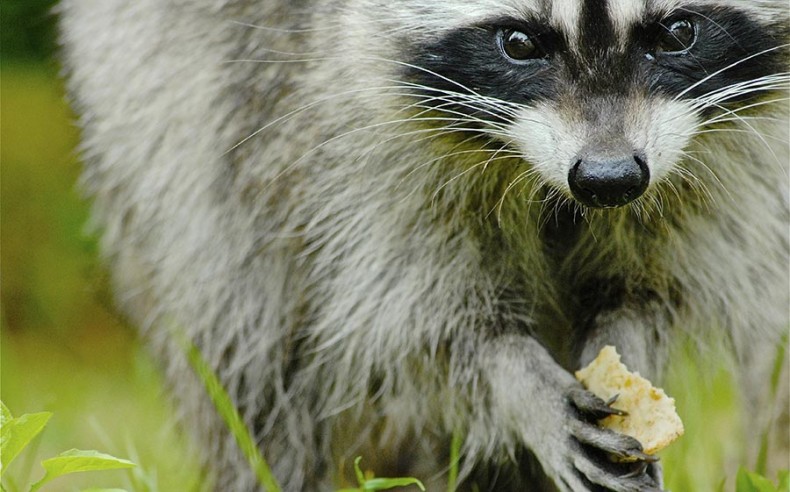Keeping Wildlife Wild
Attract and enjoy watching animals while helping them remain wild
By Amy NeyRaccoons and other wildlife aren’t meant to eat people food or pet food. This can make them sick.
According to the Southern Forest Resource Assessment Summary Report in 2002, "the South could lose about 12 million forest acres (about eight percent of forest land) to urbanization between 1992 and 2020." As urban areas increase, wildlife habitat tends to decrease. But, over 50 percent of the 751 million acres of forest land in the U.S. is privately owned. Owners of large and small acreage have a huge opportunity to increase wildlife habitat and help foster native populations of animals without making them tame or dependent on humans.
Feeding a bear may be a neat experience, but it also can be dangerous. Bears and other animals that become dependent on human food sources can damage property (even if it's just your garbage cans that contain delicious-smelling food scraps) or even attack and cause bodily harm. Always remember that wild animals are just that: wild. If fed repeatedly, animals are adaptable and can learn to keep coming back, whether or not you or your neighbors want them to. Animals drawn to urban areas for easy food may be injured or killed trying to cross roadways. Not to mention that raccoons and other wildlife aren't meant to eat people food or pet food; this can make them sick. Most importantly, by repeatedly feeding wild animals, we make them less wild and impede their ability to care for themselves.
The best way to keep wildlife wild is to promote native wildlife habitat. Even with less than an acre of land, there are many simple ways that landowners can foster the food, water and shelter that wildlife need to survive. Providing a variety of trees and shrubs is ideal. Bears, deer, turkeys and squirrels love acorns, a good example of hard mast. Excellent soft mast plants for a variety of native mammals include black cherry, dogwood, sassafras and berries. Trees and bushes that fruit in the winter, such as hollies or beautyberry, provide valuable food sources in a season when food may be scarce.
Water features such as streams and ponds are necessary, both for drinking and as a travel corridor. Providing cover plants (shrubs and trees, not just grass) along stream banks is essential for providing safety for animals. Shelter can range from trees and shrubs to downed logs and standing dead trees, or snags, that provide both food and shelter for a variety of birds, chipmunks, bears, foxes and amphibians like salamanders and turtles. Artificial brush piles placed strategically near food sources and other natural cover can provide shelter for ground-nesting birds, rabbits and other small mammals. Edges, where two different habitat types meet (such as meadow and forest), usually have more plant and animal diversity. Landowners can mimic edges by having various heights of plants on their property: native trees, shrubs and smaller herbaceous plants intermixed. Using native plants helps feed the local native wildlife that are adapted to those food sources.
So instead of just giving wildlife a handout, give them a hand up by providing native food sources, cover and water. Your local Cooperative Extension agent can help you choose which methods to apply.
-
Share this story:





Comments (1)
Catherine |
June 26, 2023 |
reply